In this article, I will compare some of the most popular intermittent fasting methods and explain if they are better than 16/8.
OMAD is better than 16/8 because it allows for a significantly better caloric reduction, therefore it is a more effective method. The caloric deficit allows for fat oxidation and insulin sensitivity, which is an imperative element of any weight reduction program.
However, just because is more effective, it doesn’t mean is for everyone. Along with greater caloric restrictions comes greater stress (source). Therefore, you should find an intermittent fasting approach that is the right fit for you.

Is OMAD Better Than Intermittent Fasting
OMAD is better than the intermittent fasting 16/8 method because it creates a greater caloric deficit. A caloric deficit is what allows the body to switch from using an external source of energy (food) into an internal source of energy (stored fat) in the process of lipolysis.
This means the fewer calories you consume, the more energy your body will need to use from the stored body fat that you have.
So one meal a day allows for much better results, compared to the regular intermittent fasting method.
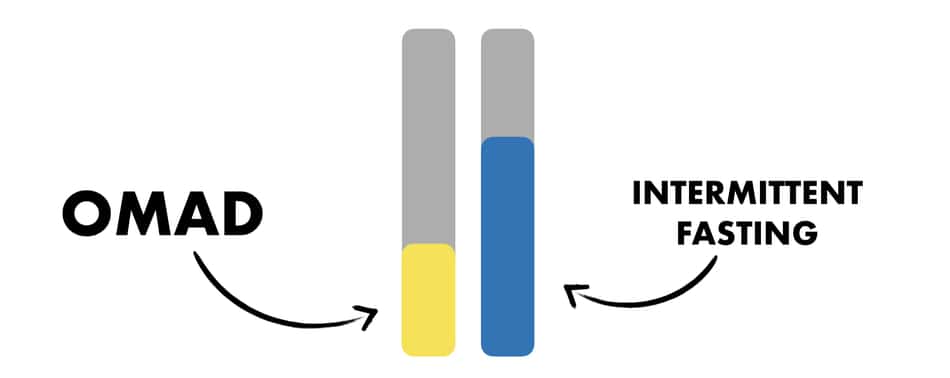
However, this is not said that OMAD is somehow the best method. Yes, it can burn significantly more calories, but it also creates additional stress.
After a prolonged period of caloric restriction, the body starts to compensate by the increased allostatic load (source).
That’s why some people won’t be a good fit for OMAD.

Here’s how it works.
The more stress we have, the more uncomfortable we feel. And a natural way of human behavior is to get out of pain towards pleasure.
Plus, keep in mind that people eat food not just to satisfy their hunger.
They eat food as a mechanism for reducing stress.
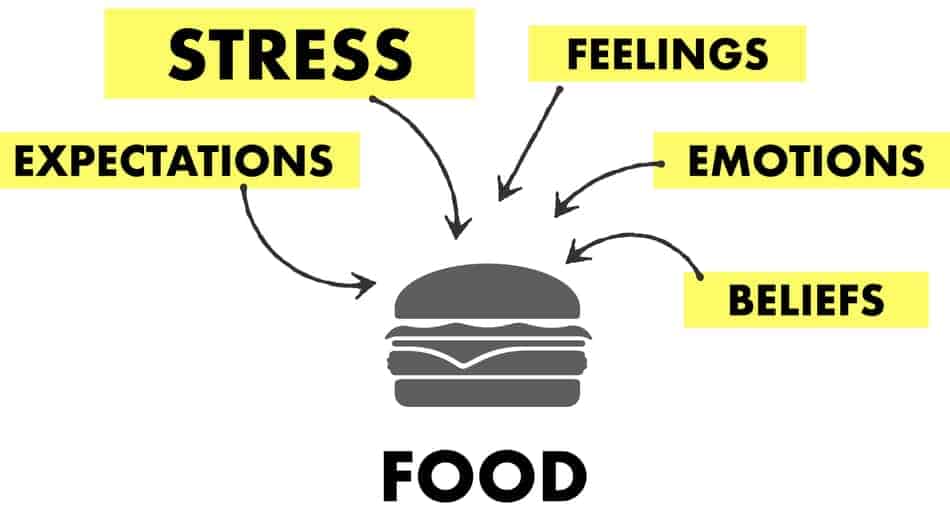
That’s why some people, who cannot handle stress well can have a hard time doing one meal a day.
Having more calorie restrictions can have adverse reactions and lead to eating more, not less.
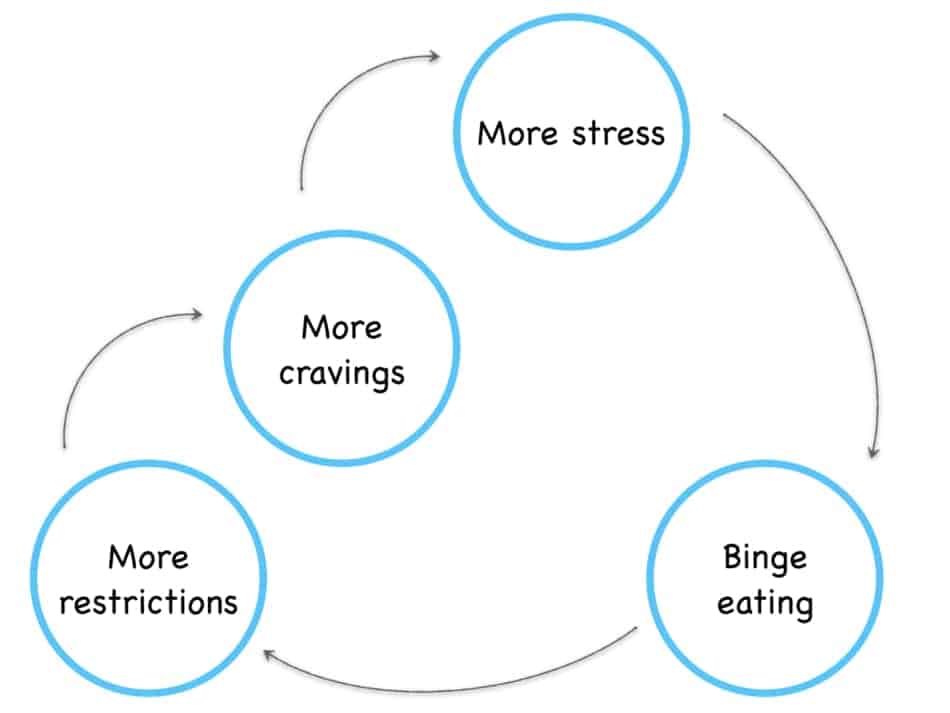
OMAD is not for everyone. That’s why it is recommended to start with some less restrictive protocols first before embarking on one meal a day.
Difference Between OMAD and Intermittent Fasting
The difference between OMAD and intermittent fasting is that OMAD is a more restricted form of not eating, where you eat only one meal a day. Intermittent fasting is a period approach where you have a feeding time for an 8-hour, followed by a 16-hour fasting window.
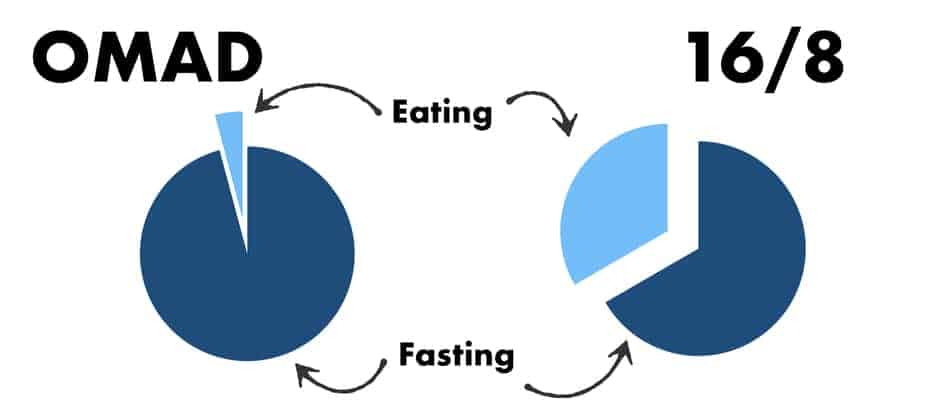
This means during the 8-hour feeding time, you can consume technically as much food as you want, and then you don’t eat until the following day.
Of course, you should stay conscious of your food choices.
Think about it as meal skipping.
You simply don’t eat breakfast and you start eating from lunch as your first meal.
Or, you can skip dinner, where you have breakfast as usual, and lunch would be your last meal of the day, until the next day’s breakfast.

It’s not complicated. This is a great way to get started with intermittent fasting. It is also a good option for people who are physically active and need more energy than just one meal.
Also, if you’re looking to build up muscle mass, doing intermittent fasting 16/8 will be your best option.
To build muscle, the body needs a high amount of protein every day.
For optimum results, you’re looking at around 1 gram per pound of body weight (source). And having just one meal a day may not cut it.
On the flip side, OMAD is an intermittent fasting method where you only have one meal per day.
This is a great way for a significant reduction of excess weight by lowering 2/3 of your daily calories.
This method is good for people who are already experienced with intermittent fasting, they know what real hunger feels like, they can handle stress without eating food, and can confidently cope with their day, despite feeling hungry.
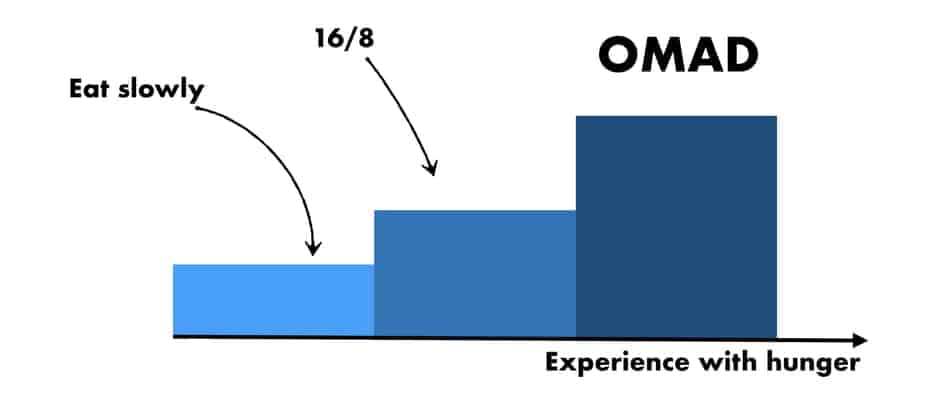
So jumping straight into OMAD is like wanting to run a 26.2-mile marathon, without any preparation. Only a few people can do that with zero practice. Everybody else needs to train.
First, you need to get moving, starting from 5k. Once you hit 5k, you can aim for 10k, and so on. Once you are comfortable with 10k, you are probably ready for a half marathon. And once you are comfortable with a half marathon, you can start shooting for the big one.
OMAD vs 16/8
The difference between OMAD vs 16/8 is that OMAD allows you for just one meal per day, wherein in 16/8 you can have multiple meals in the 8-hour feeding window. One meal a day is a more strict version of the popular warrior diet, where you eat for 4 hours, and you fast for 20-hours.
Both of these approaches work because the body switches into ketosis around 8-12 hours after your last meal (source).
So regardless of which approach you’re doing, they both work.
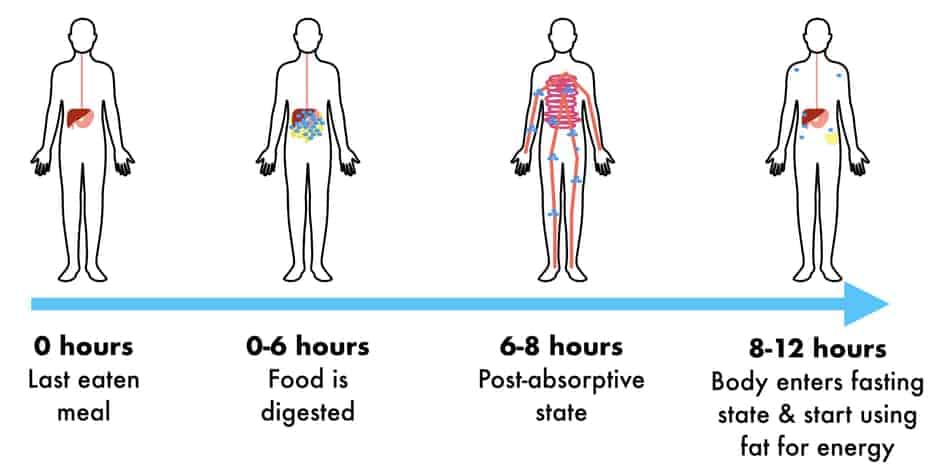
The question is which one can you handle in the long term. Remember it will take much more than a week to see the jaw-dropping results.
Depending on your personal goal.
So with choosing which protocol should you follow, you need to make a decision based on your lifestyle and hunger tolerance, rather than which one is better.
OMAD vs Warrior Diet
The difference between OMAD vs Warrior Diet is that on OMAD you have a 23-hour fasting time, followed by 1-hour feeding time, and on Warrior diet you have 20-hour fasting time, followed by 4-hour feeding time. Both OMAD and Warrior Diet are considered intermittent fasting.
Warrior diet is in between OMAD and 16/8. It is a great form of intermittent fasting because it’s got plenty of time during ketosis when your body is in the fasting state.
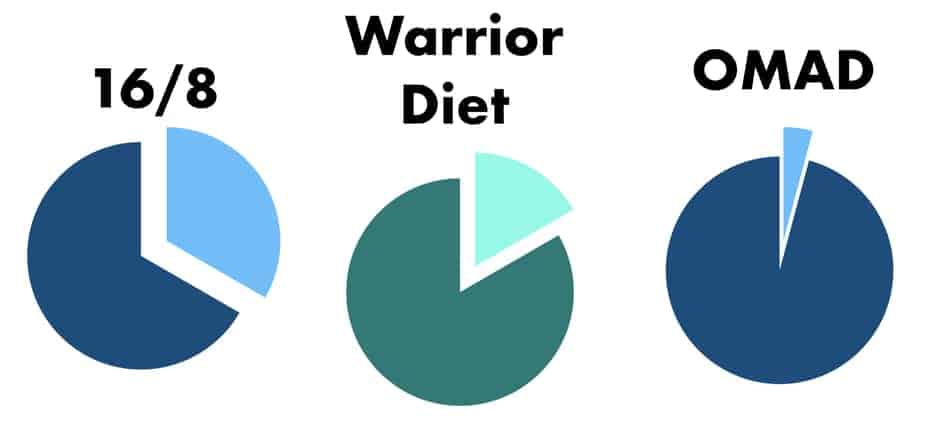
Ketosis means your body used up already the majority of the glucose from your last meal, and now you switched to burning fat (source). In the process, your body is producing ketone bodies because fatty acids cannot cross the blood-brain barrier. But your brain needs energy.
So your smart liver is manufacturing ketone bodies that can be used by the brain as fuels in times when glucose from food is not available.
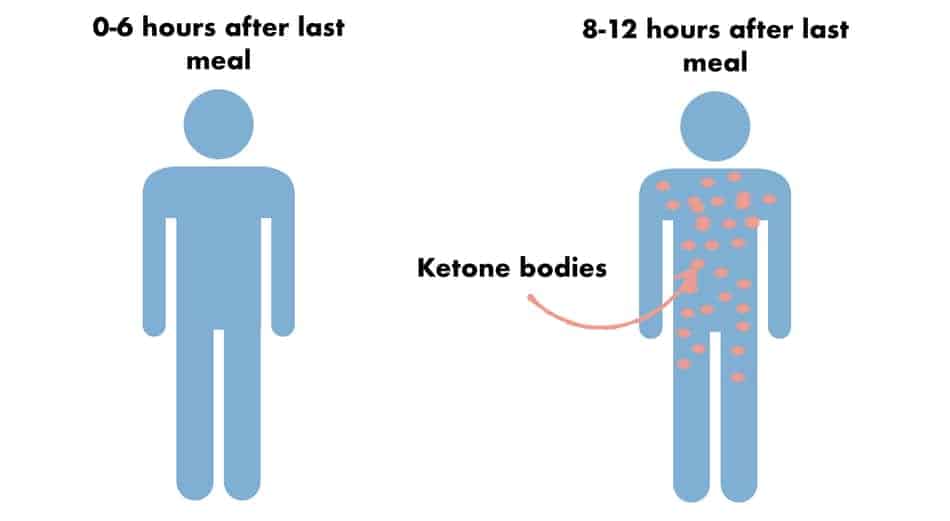
Ketosis kicks in around 8-12 hours after your last meal. Warrior diet is about fasting for 20 hours so it is slightly more strict than 16/8, but a little bit less difficult than OMAD.
Therefore, if you believe that OMAD is too much pressure right now, and at the same time you don’t find great results from doing 16/8 intermittent fasting, you can follow the warrior diet protocol.
Difference Between OMAD And 24 Hours Fast
The difference between OMAD and 24 hours fast is that on OMAD you eat one meal during a 1-hour eating window, followed by a 23-hour fast, where on a 24 hours fast you don’t eat for the exact 24-hours. So technically, OMAD and 24 hours fast are exactly the same.
So when you’re eating only one meal a day at the same time every day, technically you are doing a 24-hour fast. Therefore, there is no difference between one and another. It’s basically a different name for the same protocol.
A great example of using different names for the same thing is TMAD, warrior diet, skipping a meal or 16/8. TMAD stands for two meals a day, which is exactly what is a warrior diet, or even 16/8 if you just eat 2 meals a day.
Which Is Better OMAD or TMAD?
OMAD is better than TMAD because eating just one meal a day allows for more significant caloric restrictions, comparing to two meals a day. Eating just one meal can lead to better insulin sensitivity, better fat metabolism, and an extended period of the fasted state.
However, just like in any intermittent fasting, it will only work as long as you can handle the pressure. Because if feeling hungry is freaking you out, then doesn’t matter that OMAD is better because you won’t be able to do it anyway.
So think of it as a process where you need to build up your hunger tolerance first before you can stay 24 hours without food on a daily basis.
Related Questions
What is TMAD fasting?
TMAD fasting is a form of intermittent fasting where you eat two meals a day. It is the same approach as skipping a meal or very similar to the warrior diet or 16/8 intermittent fasting.
What is the difference between fasting and intermittent fasting?
The difference between fasting and intermittent fasting is that fasting is a term describing not eating period. Intermittent fasting means not eating on occasion, sometimes, or from time to time. The word intermittent is important because it highlights the importance of occasional fasting.
